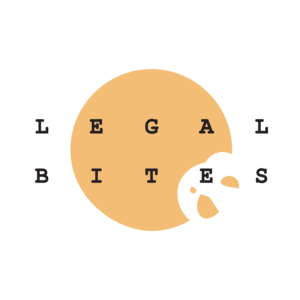
How to Review a Non-Disclosure or Confidentiality Agreement

From time to time, Dennis Group (DG) is asked to sign Non-Disclosure Agreements or Confidentiality Agreements (“NDA”). Typically, we'll receive NDAs while pursuing a project or at the beginning of a project. It's important to know what DG’s obligations are under an NDA and to conduct yourself accordingly because to the extent you are working on projects subject to NDAs, these agreements apply to you.
The following guide will help you review and understand the language of an NDA.
Defining "Confidential Information"
The definition of Confidential Information is a key clause in an NDA. Confidential Information typically includes items such as information concerning the subject matter of the NDA (e.g., our client’s or potential client’s project). Confidential Information can also include financial information, trade secrets, intellectual property, proprietary and other sensitive information of the party seeking protection from the NDA. Sometimes NDAs are mutual, meaning that the agreement protects the Confidential Information of both parties.
Watch out for:
Make sure that you understand the scope of what is defined as Confidential Information. It is often useful to require that the party disclosing Confidential Information label it as such so there's no misunderstanding and we can care for and treat the information appropriately. Do not underestimate how broad the scope of Confidential Information can be. Along with everything listed above and more, it can also include DG’s work product.
Exclusions from Confidential Information
NDAs also typically contain language to clarify what should not be considered Confidential Information. Some common examples of exclusions include information that was in the public domain or already in the receiving party’s possession at the time of disclosure and information required to be disclosed pursuant to law.
Term of Agreement
The term of an NDA is the period of time during which our obligation to maintain confidentiality lasts. Typically, this term encompasses a period of years. We usually see 3, 5, or 10-year terms.
Watch out for:
How we must treat Confidential Information pursuant to an NDA can be more stringent than how we are accustomed to treating our own confidential information. No matter what our intended use of Confidential Information may be, whether it be for marketing purposes or otherwise, we should always seek written permission from the disclosing party when in doubt.
Confidentiality Obligations
In addition to understanding the breadth of what does and does not constitute Confidential Information in an NDA, it is important to know what our actual obligations are. NDAs typically state that the Confidential Information must be held by the recipient in strict confidence and that the Confidential Information must not be used for any other purpose. Most NDAs also state that Confidential Information must not be disclosed without the prior written consent of the party disclosing the information.
Watch out for:
In rare instances, we may find that the obligation to maintain confidentiality pursuant to an NDA is perpetual. We should push back on such obligations because they are overly burdensome from an administrative standpoint.
Application to Third Parties
When we enter an NDA, it typically applies to employees, consultants, subcontractors, and agents. Therefore, we should discuss our confidentiality obligations on a project with our project teams and, at a minimum, send them and our subcontractors a copy of the NDA. We should also ask employees and subcontractors to confirm in writing that they have read the NDA and agree to be bound to it to the same extent as DG is bound. Email is fine for this purpose. For a more formal form of NDA acknowledgment, contact General Counsel.
Return or Destruction of Confidential Information
NDAs often contain a provision dealing with the return or destruction of Confidential Information at the time of termination of the agreement. This may include an obligation to certify in writing that we have destroyed all documents containing Confidential Information that we received. This may be difficult to do 5+ years after the fact and we typically want to retain at least one copy of any project documents for archival purposes.
Remedies for Breach
Money damages as a result of a breach of confidentiality are difficult to ascertain. The appropriate remedy for a breach of confidentiality under an NDA is injunctive relief. In this case, the non-breaching party goes to court and seeks an order directing the breaching party to stop disclosing the Confidential Information.
Watch out for:
Sometimes NDAs contain indemnification clauses for breach of confidentiality. For the same reason that injunctive relief is more appropriate than money damages in the event of a breach (i.e., money damages are unforeseeable and immeasurable), we do not want to agree to indemnify the other party for our potential breach of an NDA.
Red Flags (When to Seek Advice)
Exclusivity/Non-Competition
An exclusivity clause is a promise not to work for a competitor of the party with whom we are entering an NDA. Due to the nature of DG’s business, we should never accept such a provision in a contract. Such promises limit DG’s business for other clients and impacts DG’s obligations under existing agreements.
Intellectual Property
Keep an eye out for language in an NDA that suggests that the other party obtains rights in DG’s intellectual property. One example might be DG’s standard details that we intend to use on the project that is the subject of the NDA and on other projects for different clients. If we do not carefully review language in an NDA concerning DG’s intellectual property, we risk inadvertently transferring our rights in such intellectual property to the other party.
Keep in mind that currently only the Senior Partners have authority to sign NDAs on behalf of DG.

In Conclusion...
The next time you receive an NDA on one of your projects, read through it while relying on this guide. NDAs are usually 5 pages or less in length, so it should not take you long. You will be surprised how much better you understand the language and its implications.





